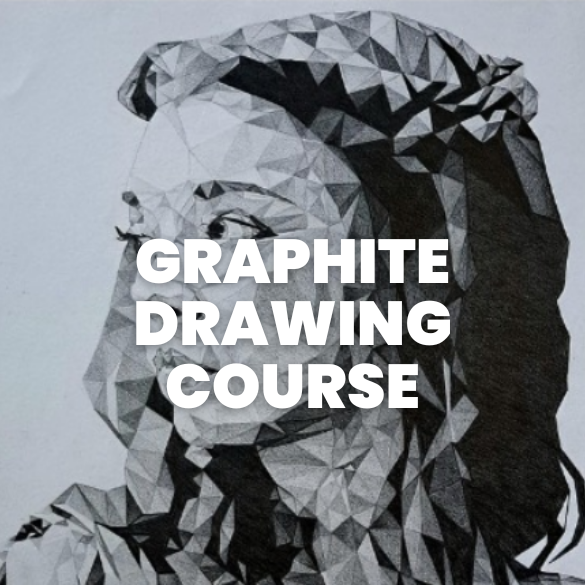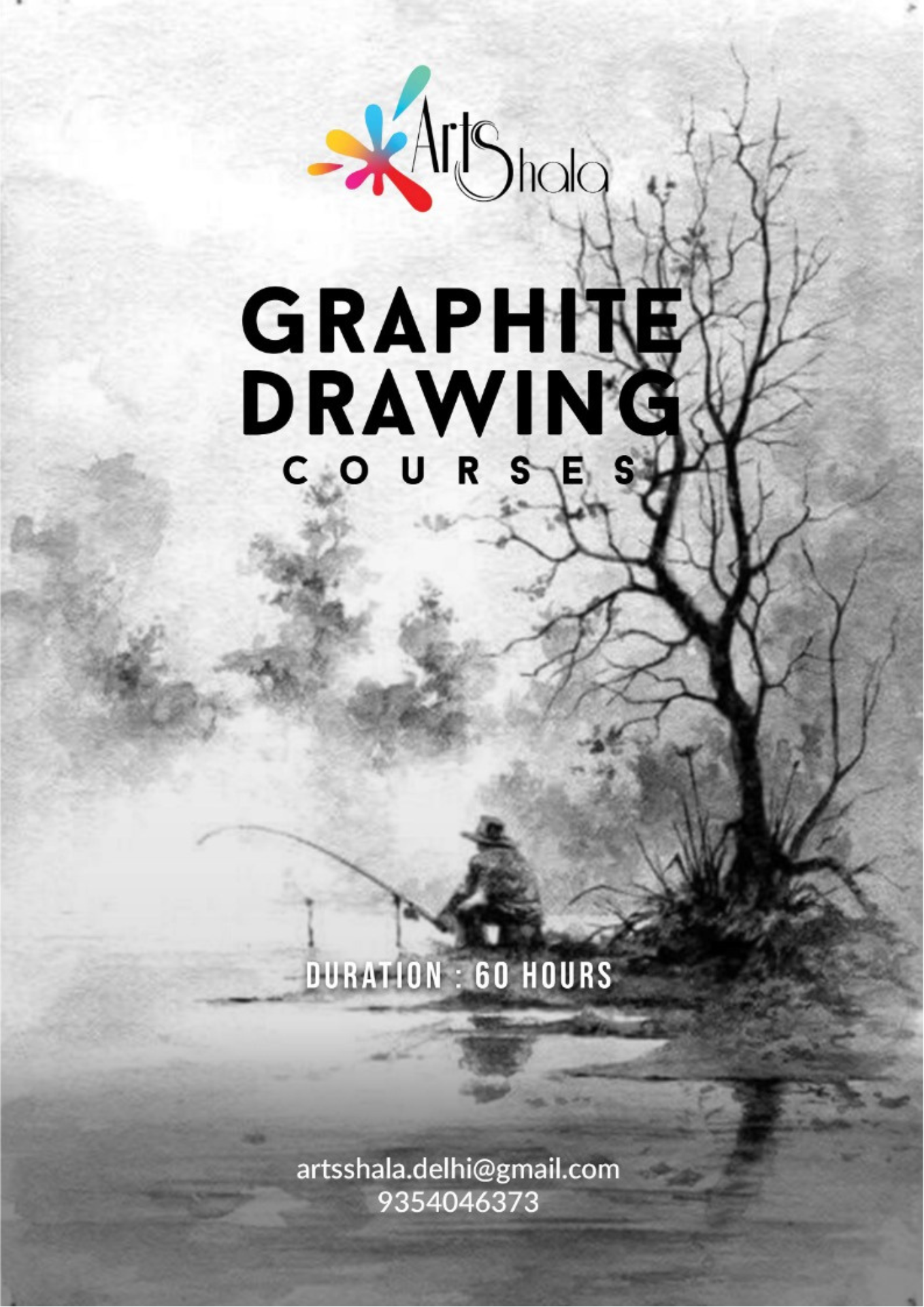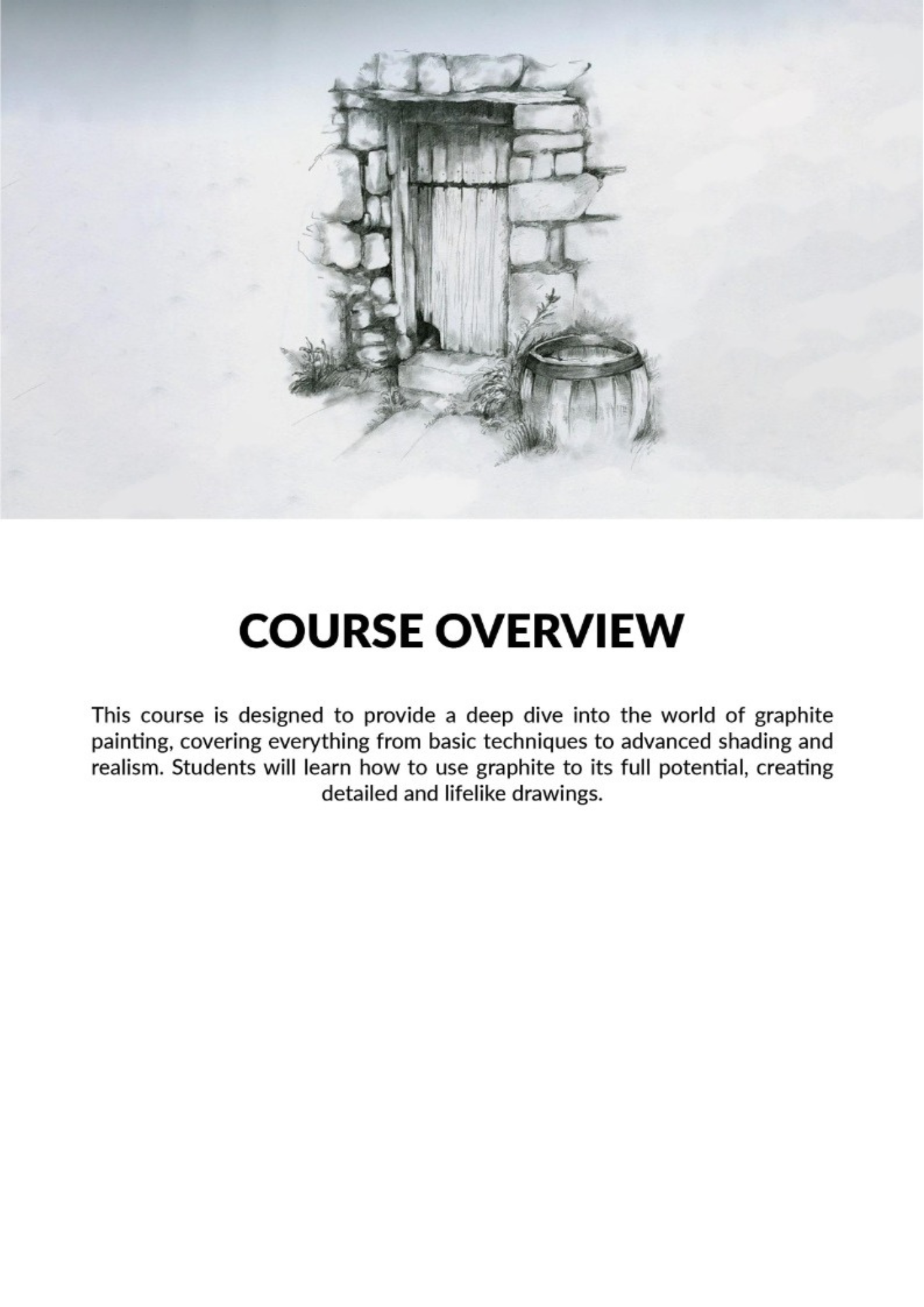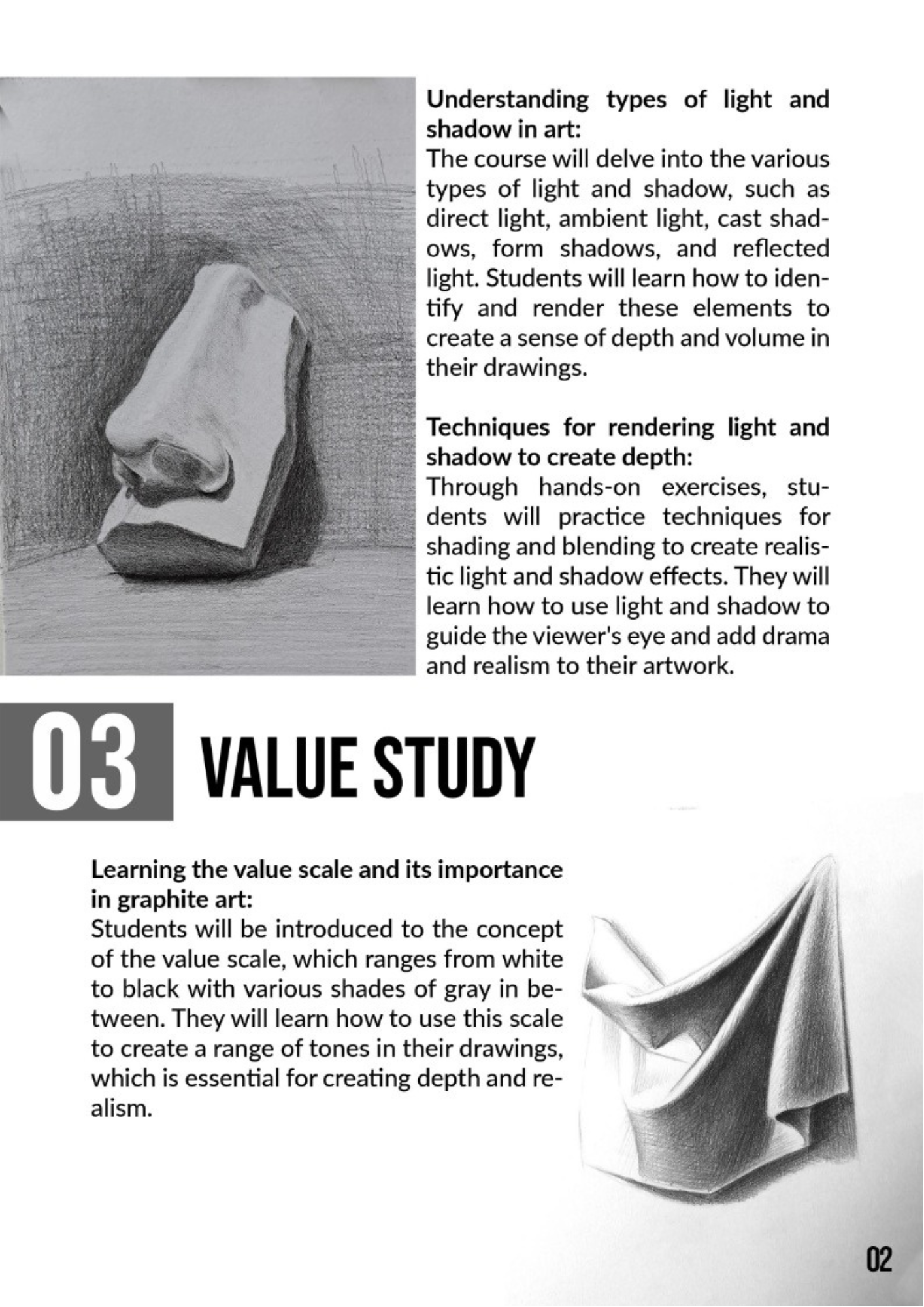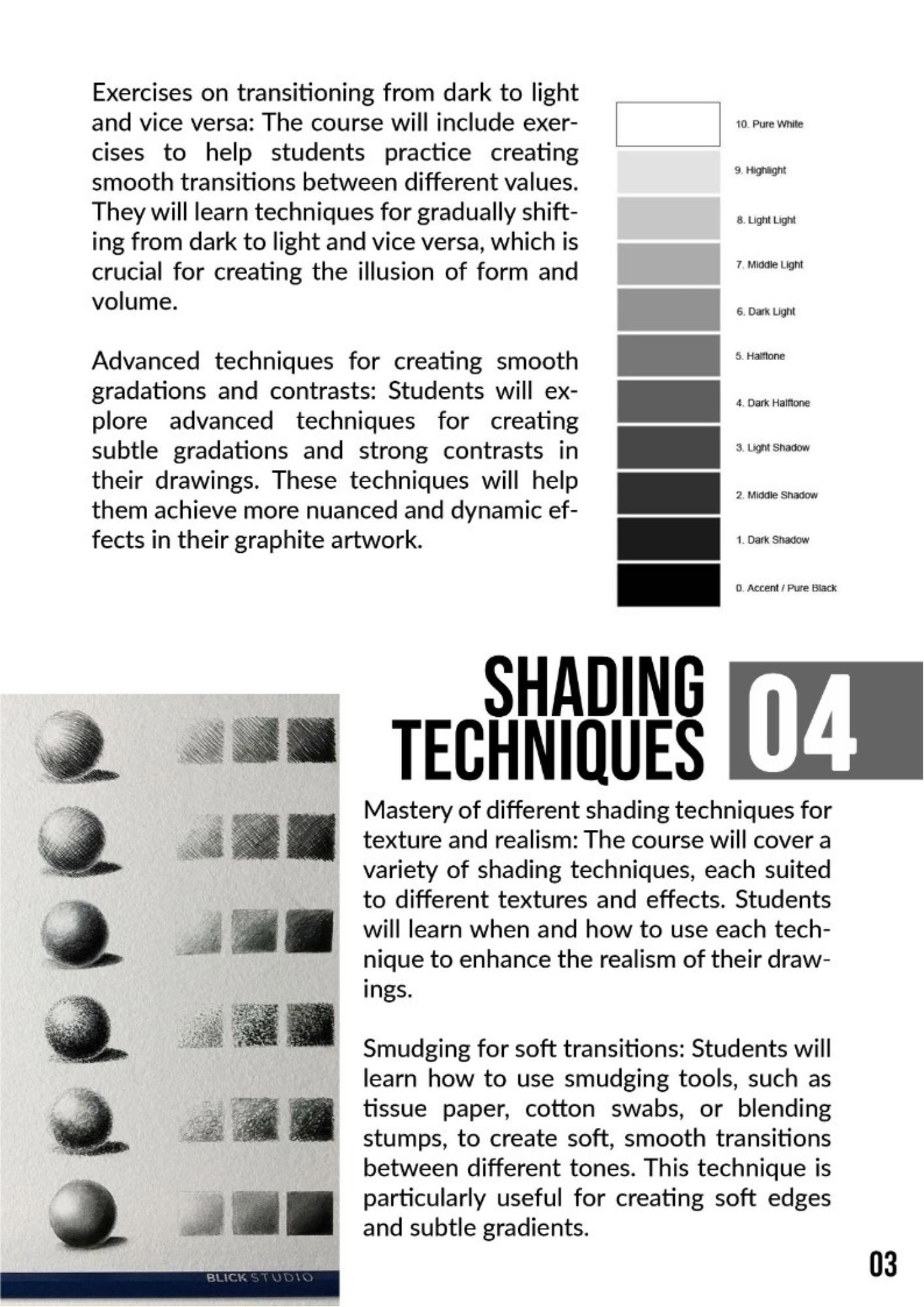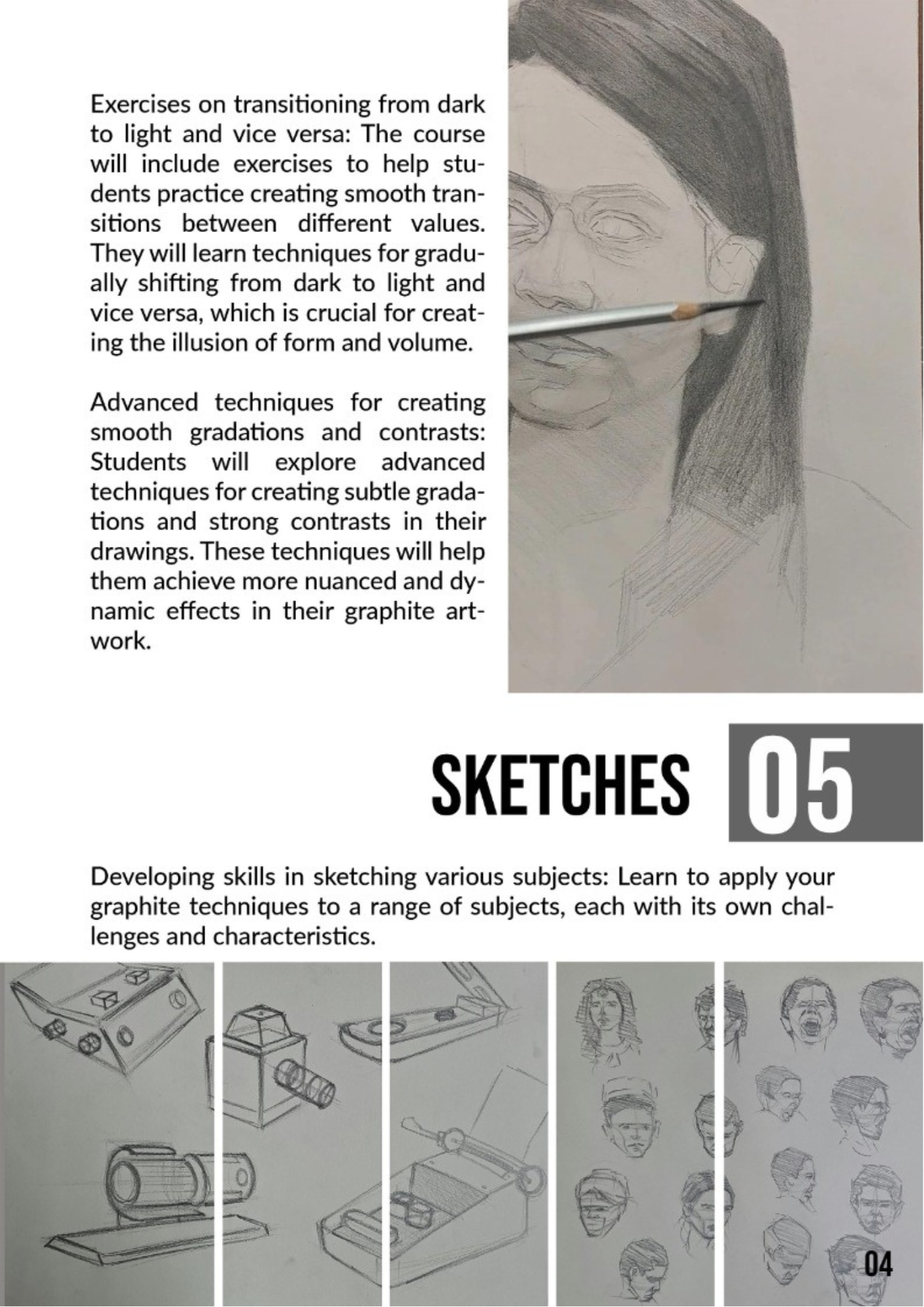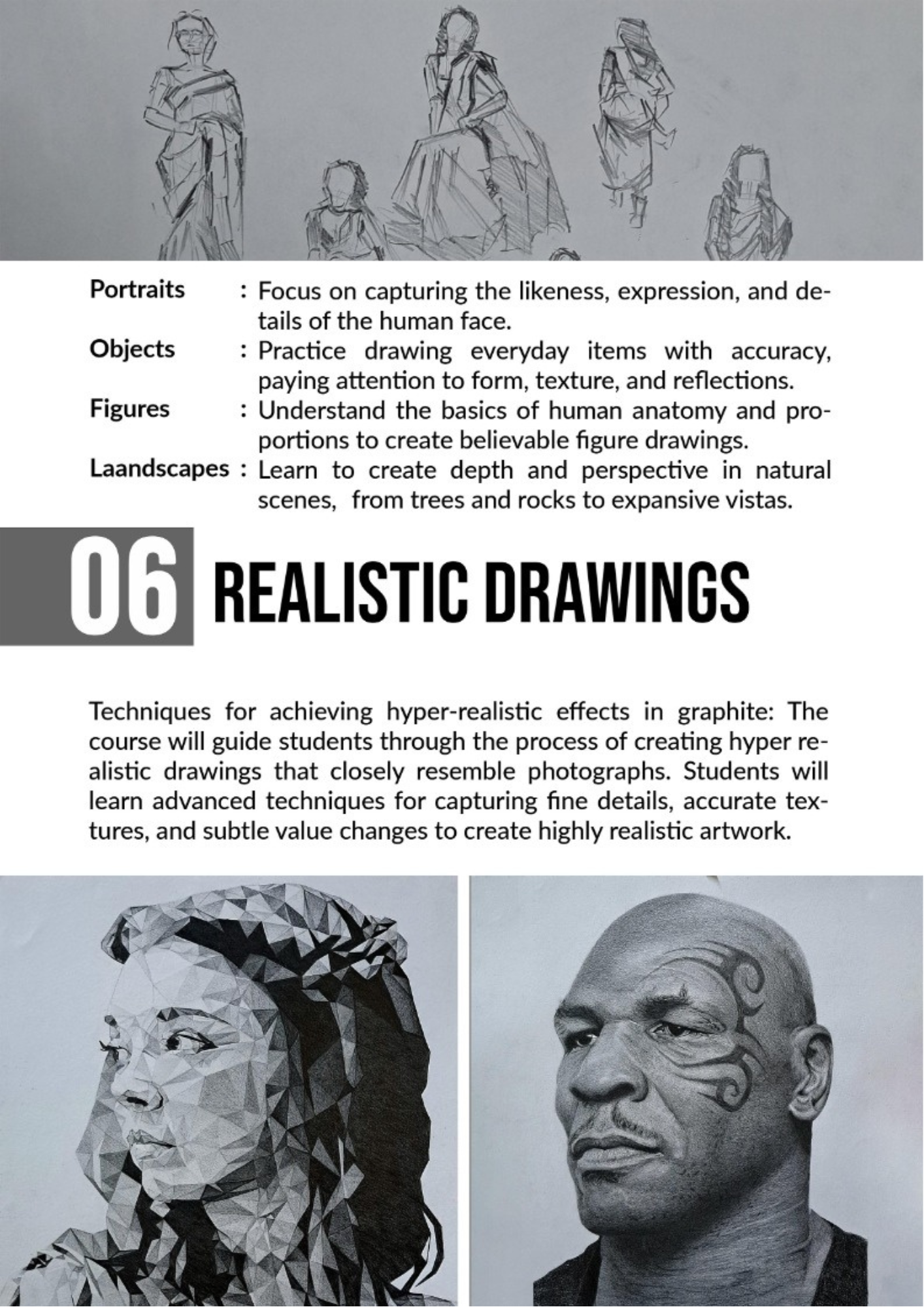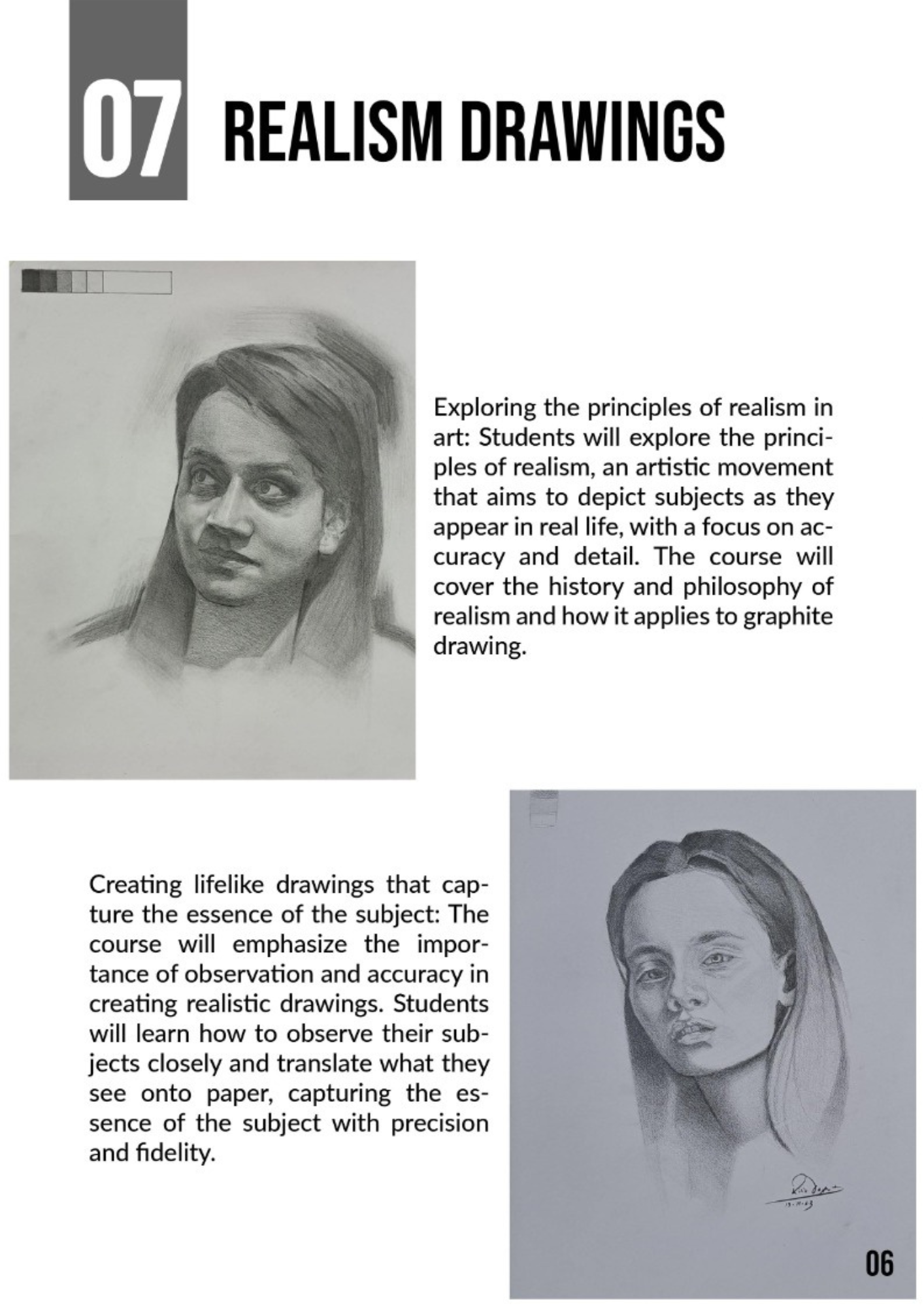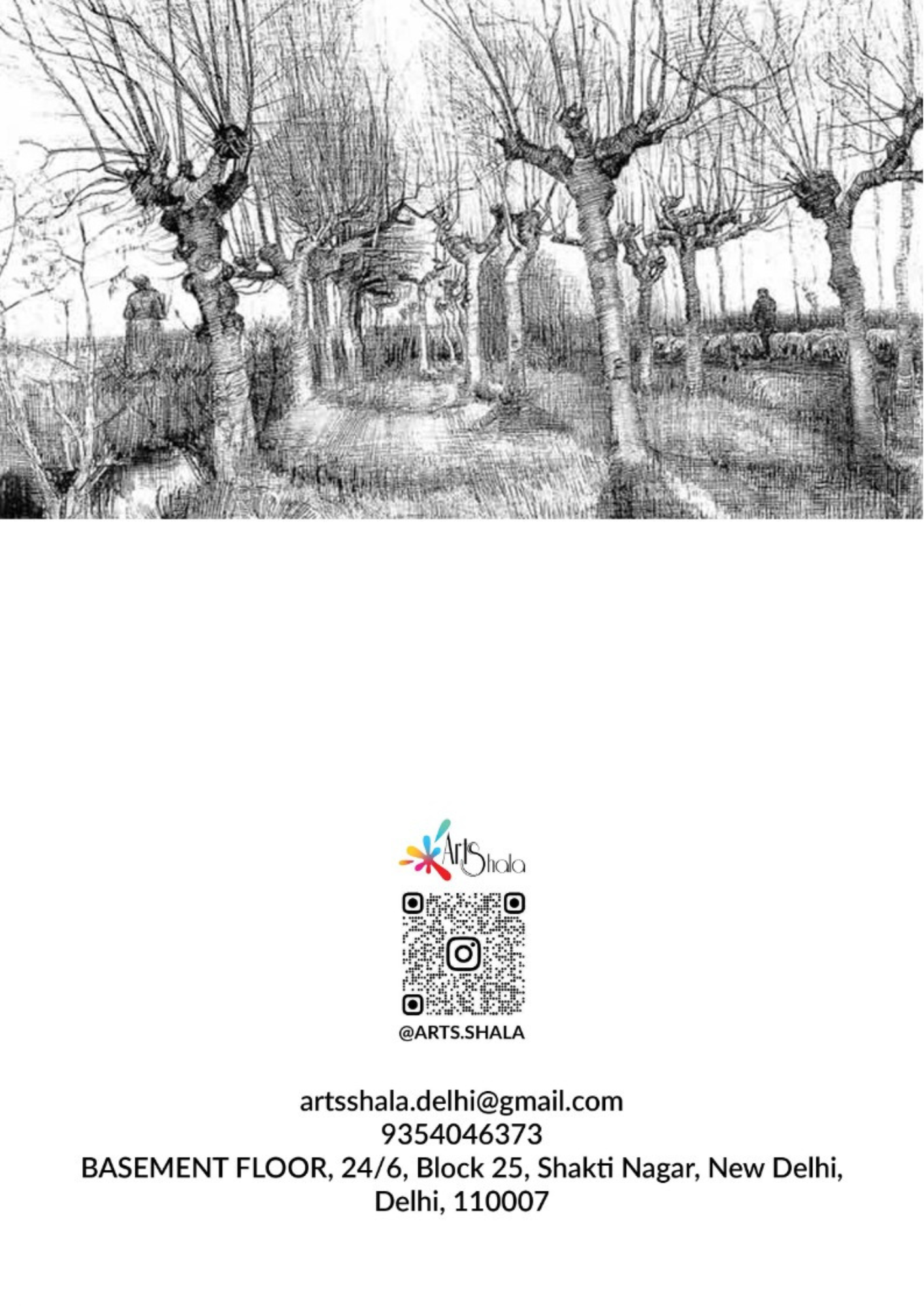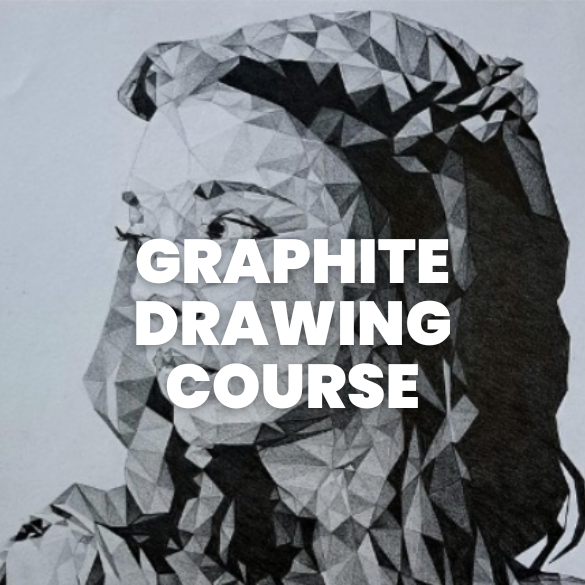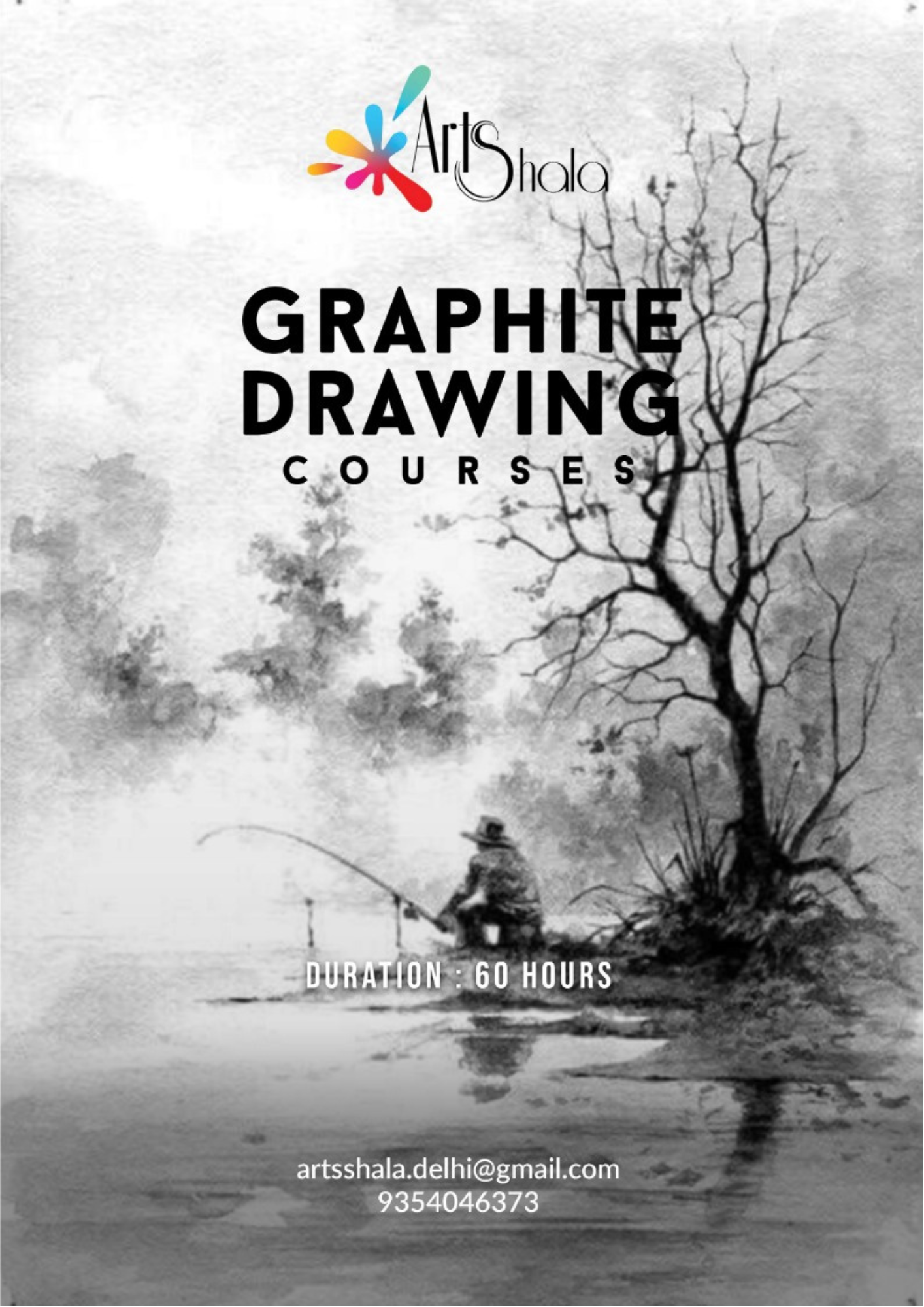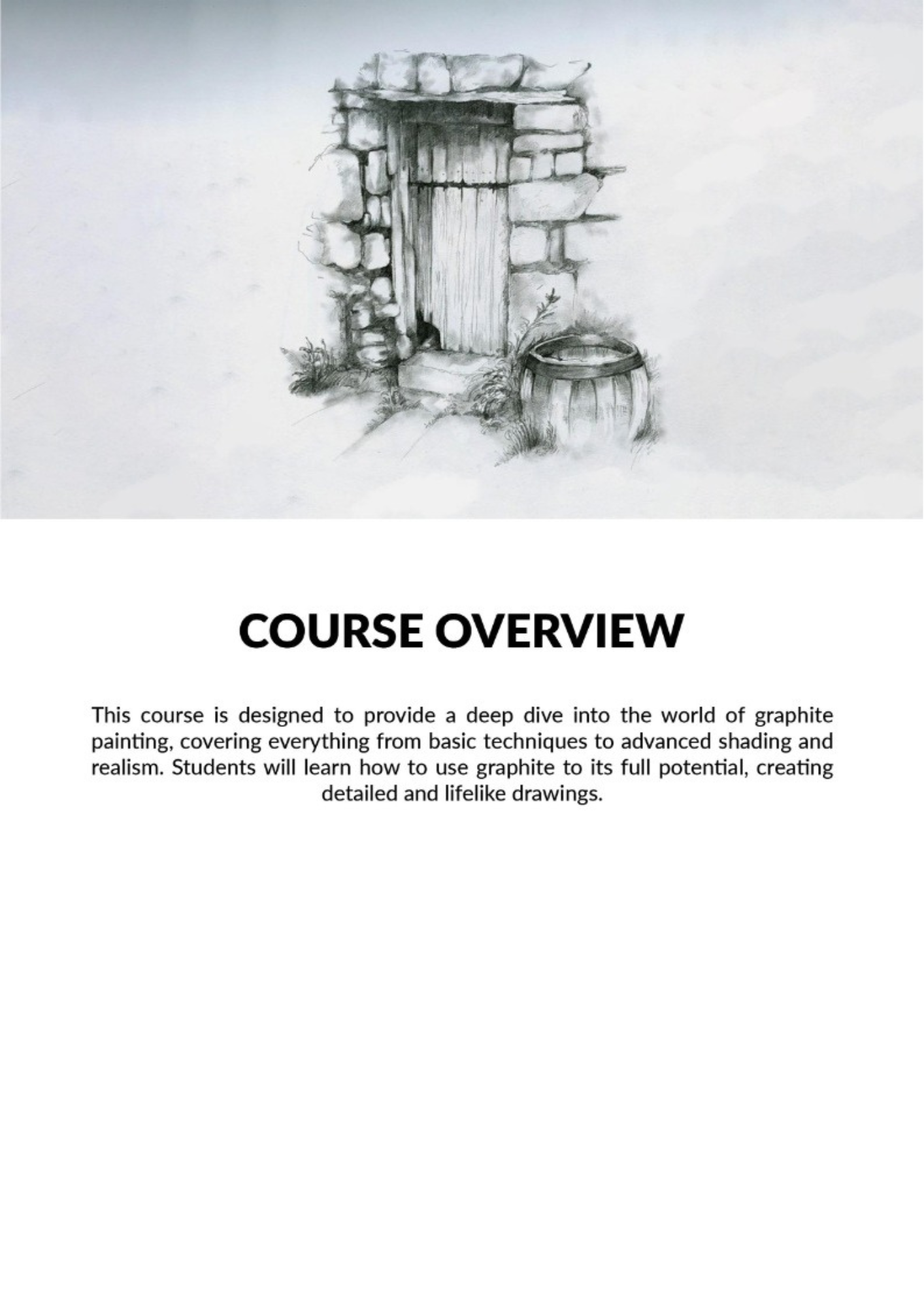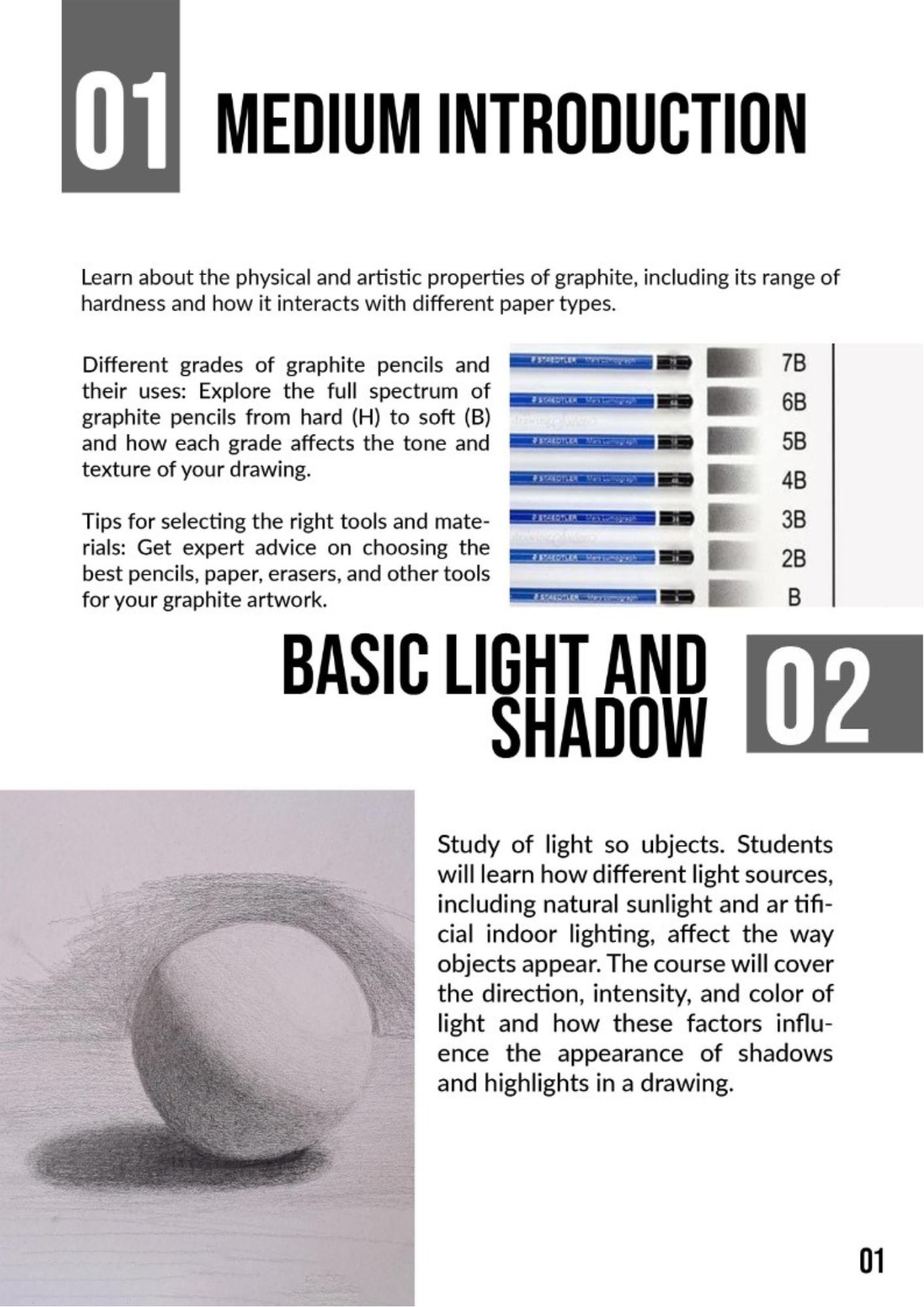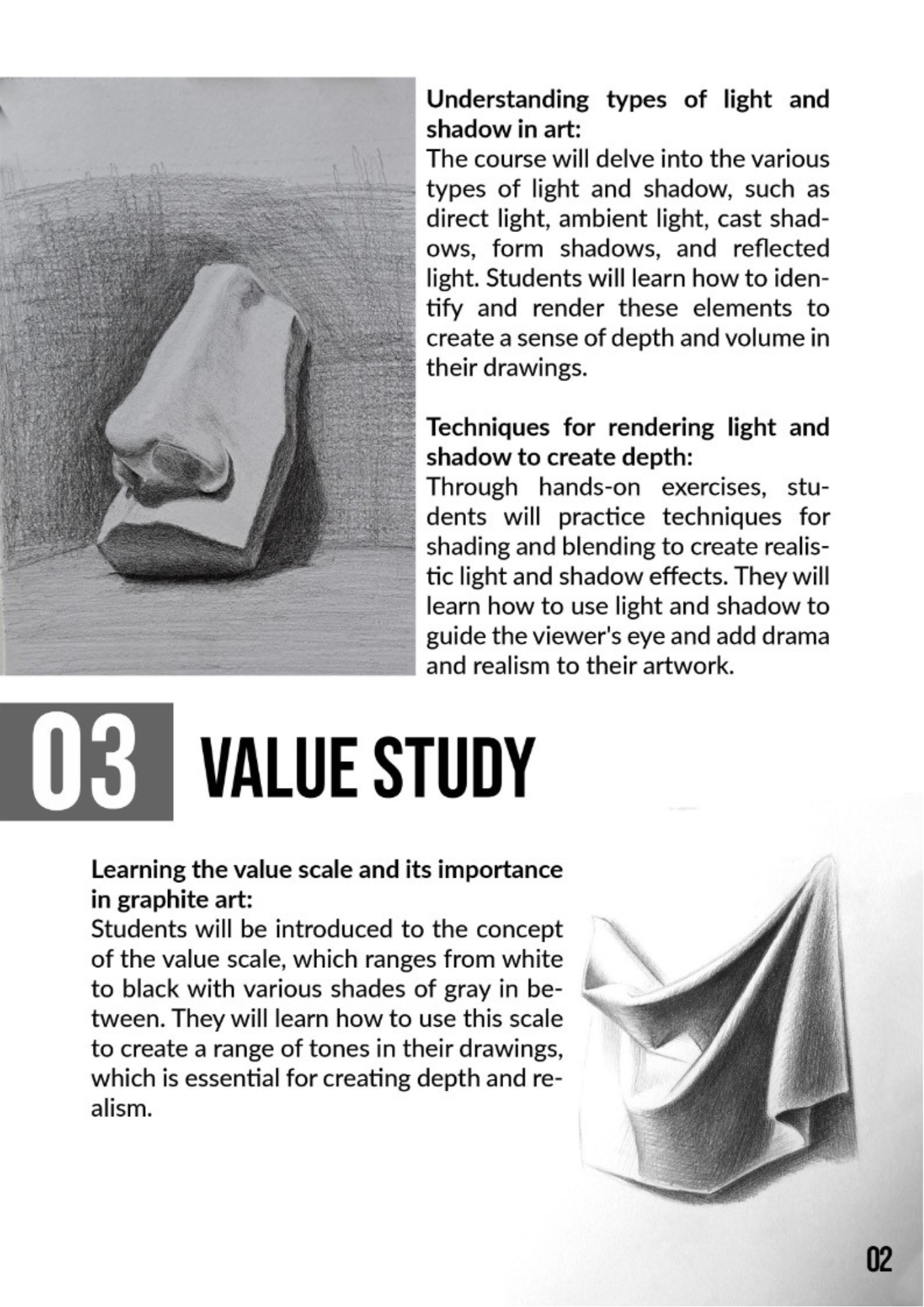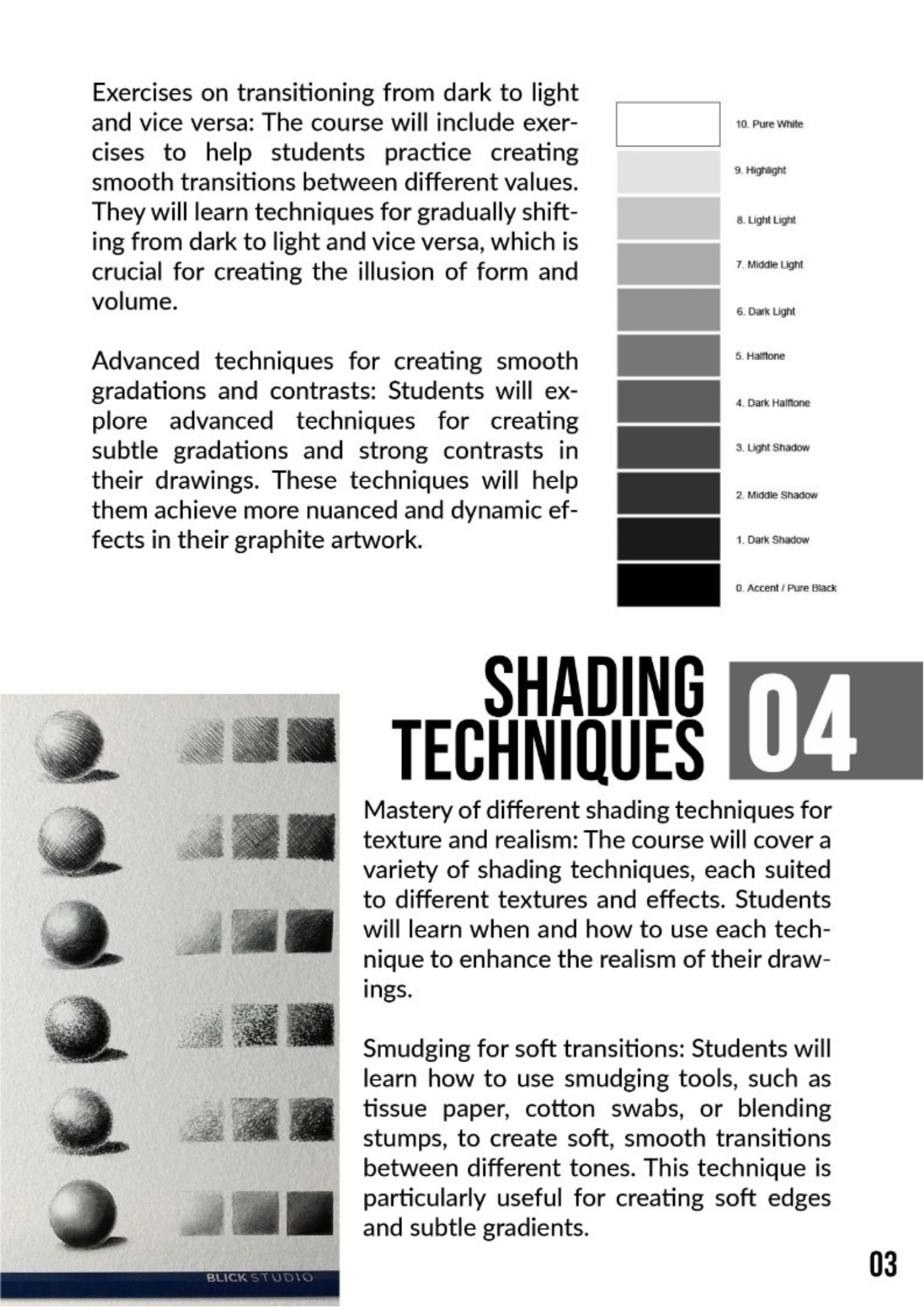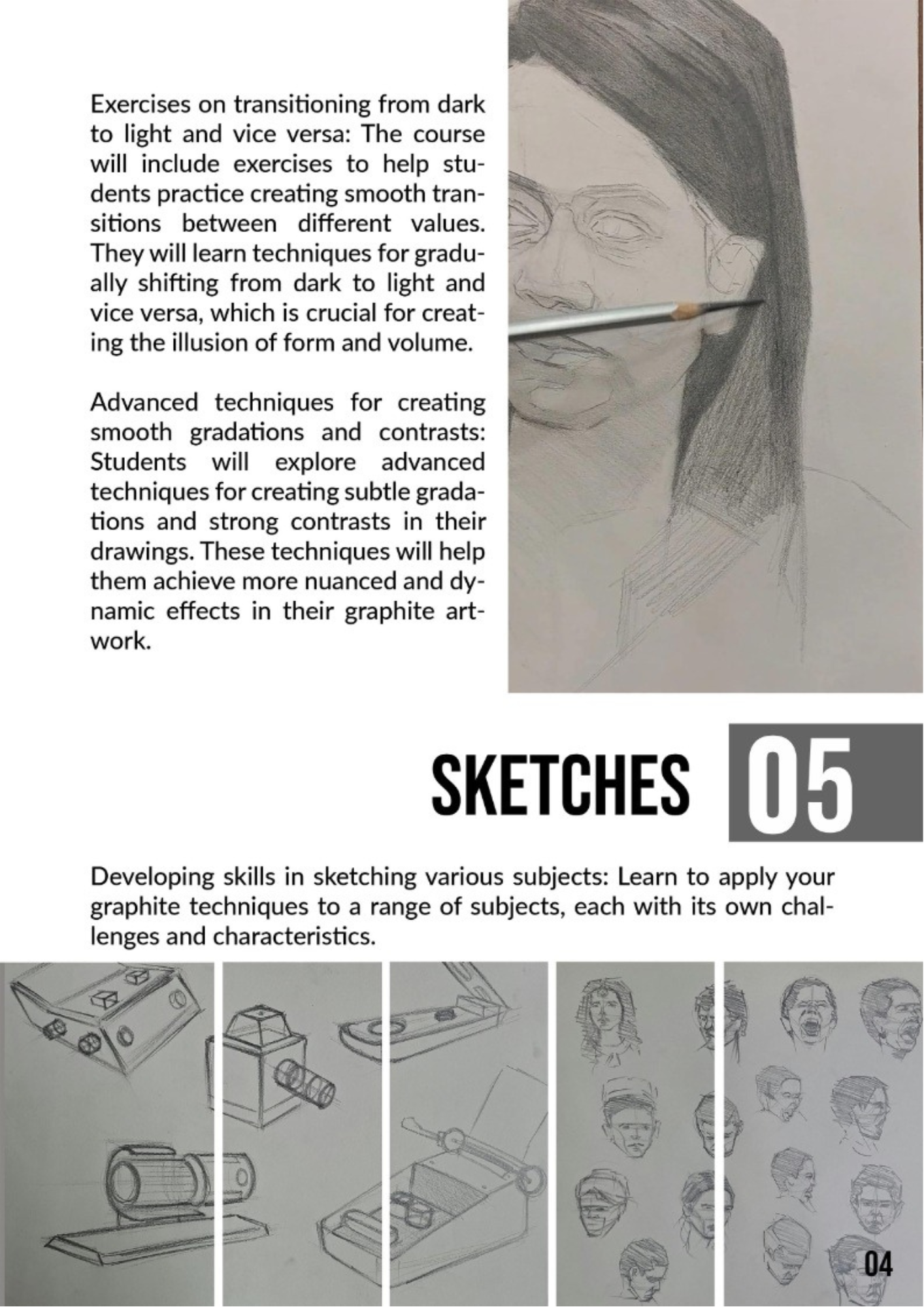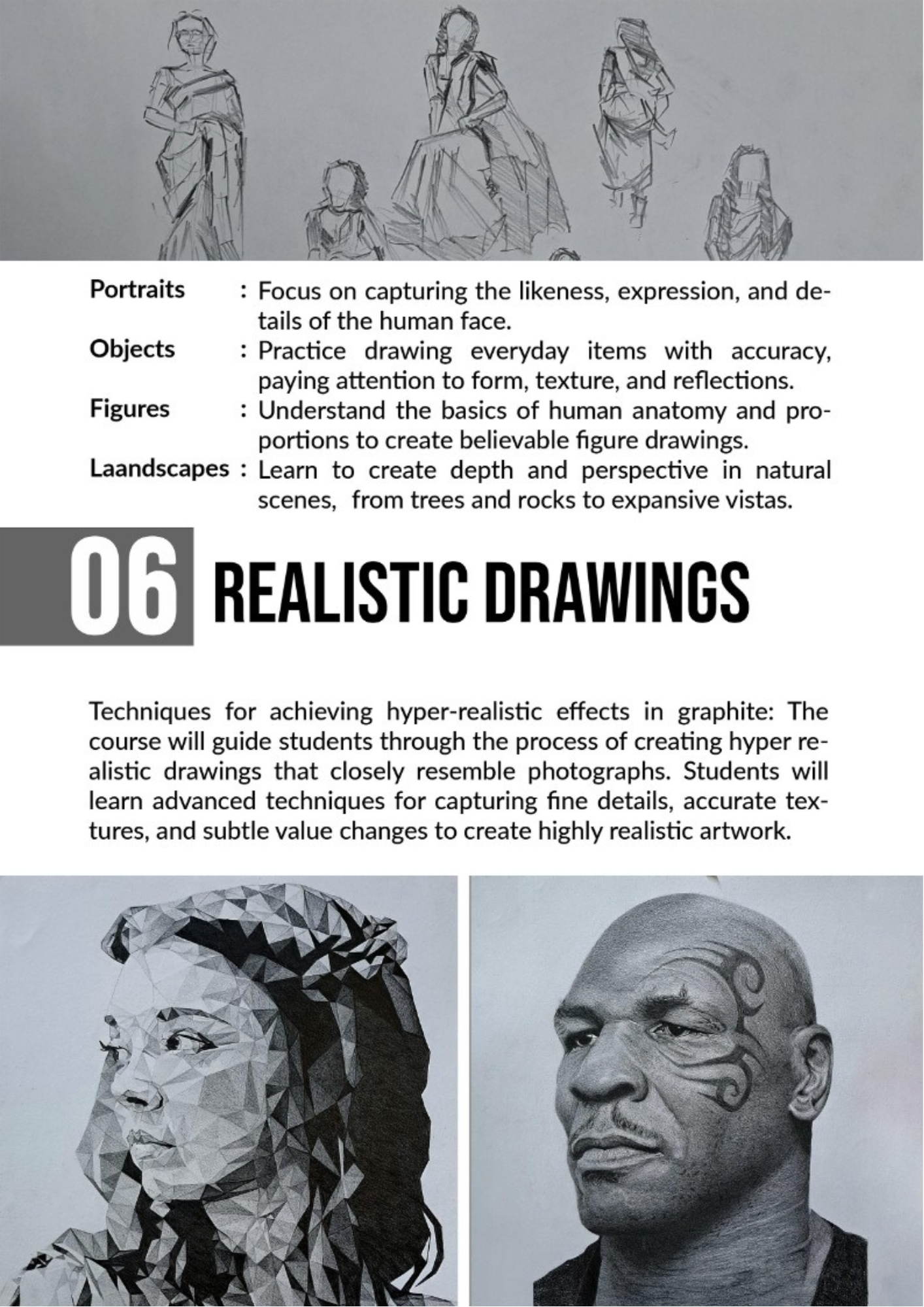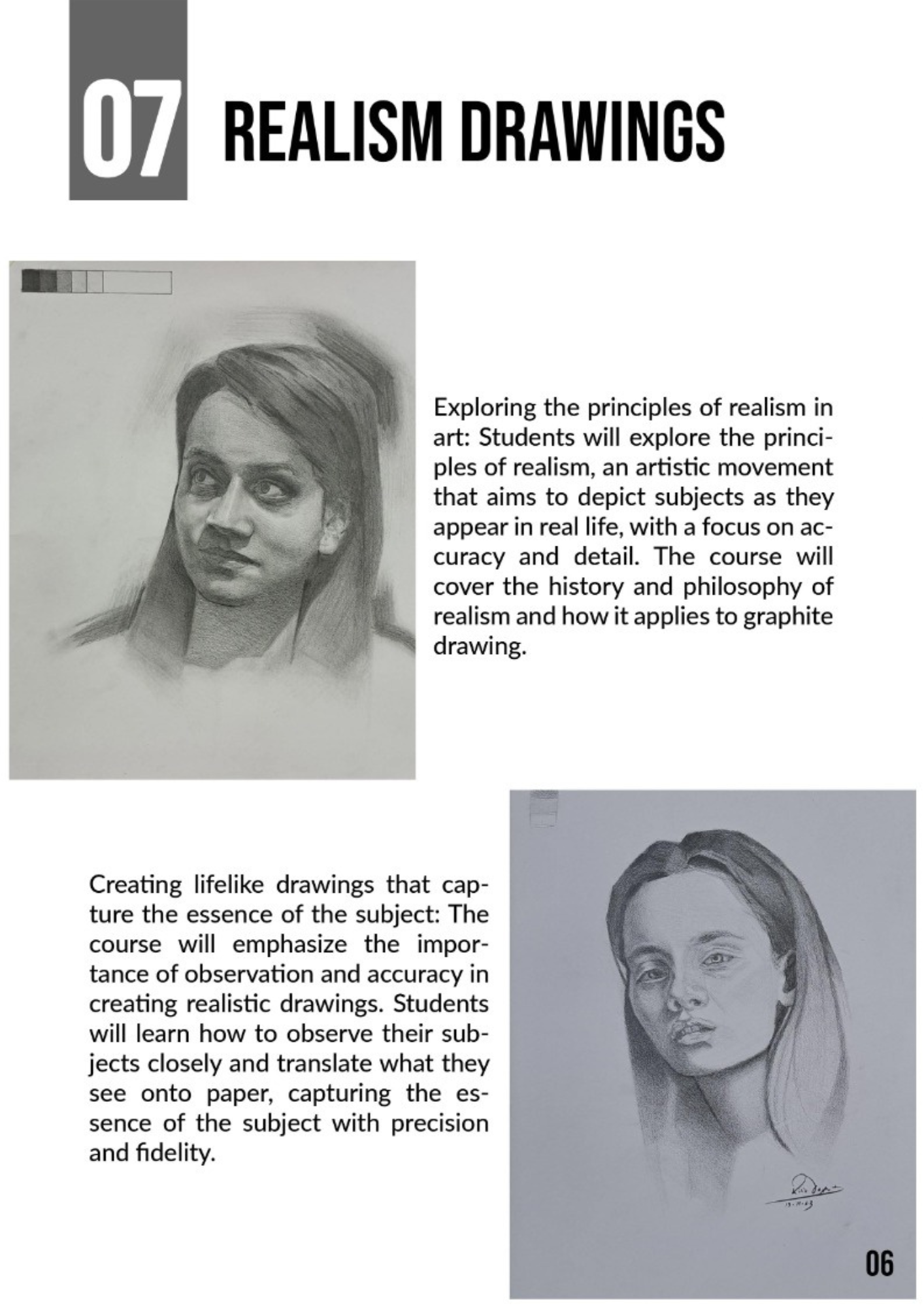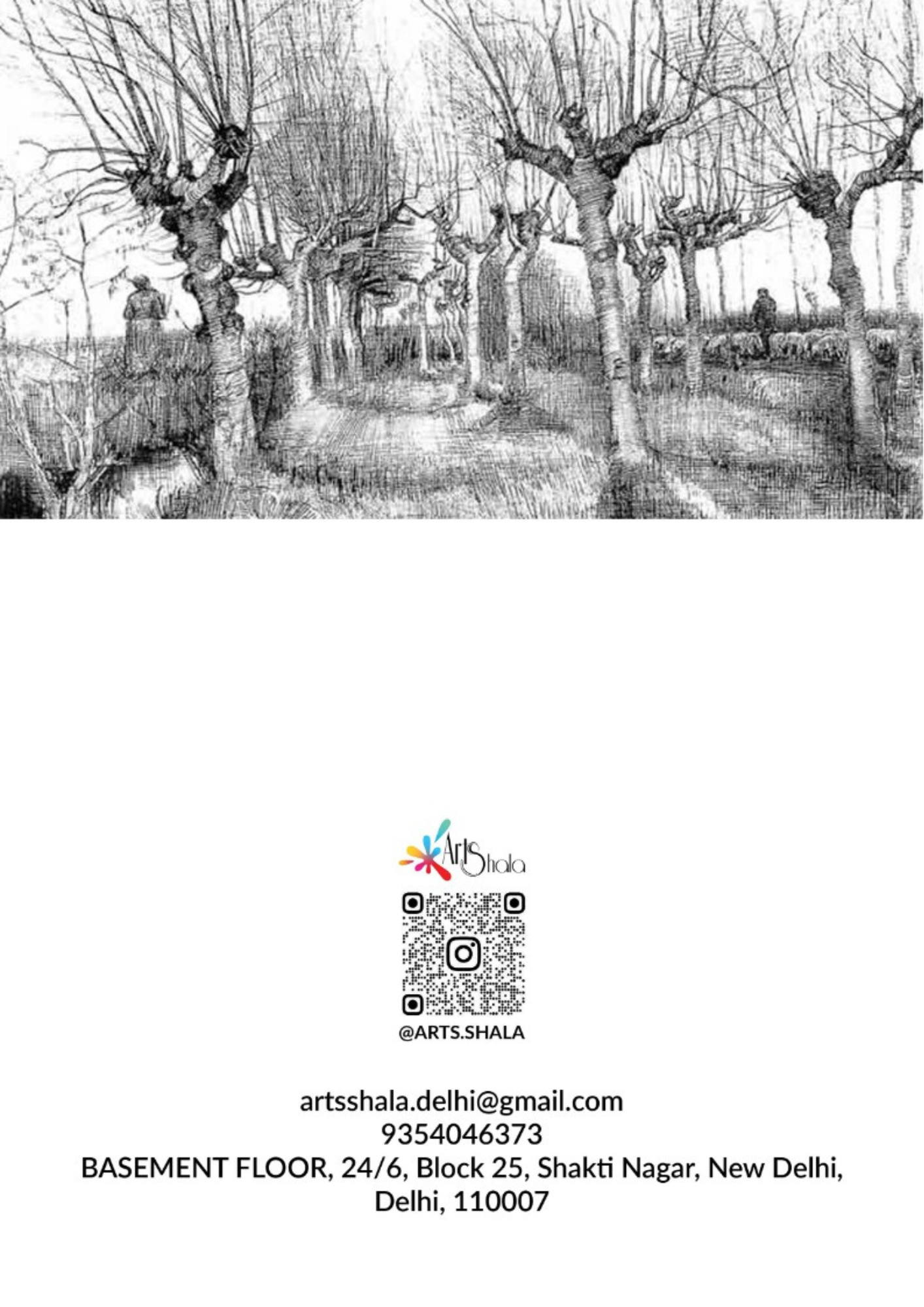This course is designed to provide a deep dive into the world of graphite painting, covering everything from basic techniques to advanced shading and realism. Students will learn how to use graphite to its full potential, creating detailed and lifelike drawings.
What the Course Includes:
Medium Introduction:
Learn about the physical and artistic properties of graphite, including its range of hardness and how it interacts with different paper types.
Different grades of graphite pencils and their uses: Explore the full spectrum of graphite pencils from hard (H) to soft (B) and how each grade affects the tone and texture of your drawing.
Tips for selecting the right tools and materials: Get expert advice on choosing the best pencils, paper, erasers, and other tools for your graphite artwork.
Basic Light and Shadow
Study of light sources and their impact on subjects. Students will learn how different light sources, including natural sunlight and artificial indoor lighting, affect the way objects appear. The course will cover the direction, intensity, and color of light and how these factors influence the appearance of shadows and highlights in a drawing.
Understanding types of light and shadow in art: The course will delve into the various types of light and shadow, such as direct light, ambient light, cast shadows, form shadows, and reflected light. Students will learn how to identify and render these elements to create a sense of depth and volume in their drawings.
Techniques for rendering light and shadow to create depth: Through hands-on exercises, students will practice techniques for shading and blending to create realistic light and shadow effects. They will learn how to use light and shadow to guide the viewer's eye and add drama and realism to their artwork.
Value Study
Learning the value scale and its importance in graphite art: Students will be introduced to the concept of the value scale, which ranges from white to black with various shades of gray in between. They will learn how to use this scale to create a range of tones in their drawings, which is essential for creating depth and realism.
Exercises on transitioning from dark to light and vice versa: The course will include exercises to help students practice creating smooth transitions between different values. They will learn techniques for gradually shifting from dark to light and vice versa, which is crucial for creating the illusion of form and volume.
Advanced techniques for creating smooth gradations and contrasts: Students will explore advanced techniques for creating subtle gradations and strong contrasts in their drawings. These techniques will help them achieve more nuanced and dynamic effects in their graphite artwork.
Shading Techniques
Mastery of different shading techniques for texture and realism: The course will cover a variety of shading techniques, each suited to different textures and effects. Students will learn when and how to use each technique to enhance the realism of their drawings.
Smudging for soft transitions: Students will learn how to use smudging tools, such as tissue paper, cotton swabs, or blending stumps, to create soft, smooth transitions between different tones. This technique is particularly useful for creating soft edges and subtle gradients.
Hatching and crosshatching for texture and depth: The course will teach students how to use hatching and crosshatching, which involve drawing parallel lines or intersecting sets of lines, to create texture and depth. These techniques are effective for suggesting surface detail and adding a sense of dimensionality to drawings.
Stippling for intricate details: Students will learn how to use stippling, a technique that involves creating patterns of dots, to build up tone and texture. This method is especially useful for creating detailed textures and suggesting light and shadow in intricate areas.
Sketches:
Developing skills in sketching various subjects: Learn to apply your graphite techniques to a range of subjects, each with its own challenges and characteristics.
Portraits: Focus on capturing the likeness, expression, and details of the human face.
Objects: Practice drawing everyday items with accuracy, paying attention to form, texture, and reflections.
Figures: Understand the basics of human anatomy and proportions to create believable figure drawings.
Landscapes: Learn to create depth and perspective in natural scenes, from trees and rocks to expansive vistas.
Realistic Drawings:
Techniques for achieving hyper-realistic effects in graphite: The course will guide students through the process of creating hyper-realistic drawings that closely resemble photographs. Students will learn advanced techniques for capturing fine details, accurate textures, and subtle value changes to create highly realistic artwork.
Realism Drawings:
Exploring the principles of realism in art: Students will explore the principles of realism, an artistic movement that aims to depict subjects as they appear in real life, with a focus on accuracy and detail. The course will cover the history and philosophy of realism and how it applies to graphite drawing.
Creating lifelike drawings that capture the essence of the subject: The course will emphasize the importance of observation and accuracy in creating realistic drawings. Students will learn how to observe their subjects closely and translate what they see onto paper, capturing the essence of the subject with precision and fidelity.


